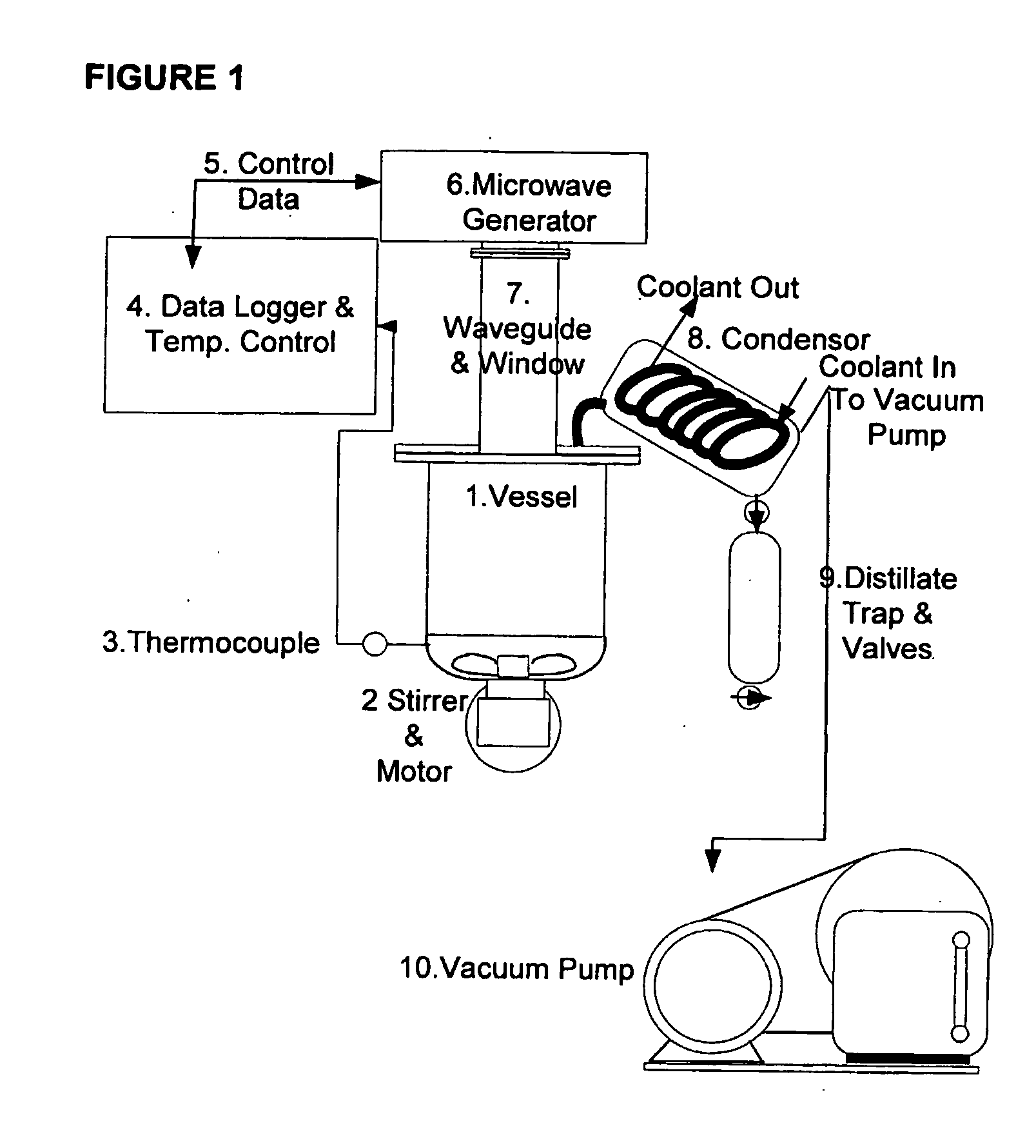Process for recycling waste plastics
a technology for recycling waste plastics and plastic items, applied in the direction of plastic recycling, recycling and recovery technologies, etc., can solve the problems of limited use of resulting plastic products, and high cost of preparing used plastic items for re-use, so as to achieve efficient and substantially uniform heating
- Summary
- Abstract
- Description
- Claims
- Application Information
AI Technical Summary
Benefits of technology
Problems solved by technology
Method used
Image
Examples
& examples
METHODS & EXAMPLES
Example 1
[0081] In order to produce a pipe for testing the properties of the combined plastic the following mix was prepared and processed with the parameters as shown in Table 3.
TABLE 3Plastic Mixture shreddedand granulated to 3-15 mmAmountPVC20% w / wPP20% w / wPET20% w / wHDPE20% w / wPAPER 4% w / wFLY ASH 5% w / wCarbon Black 1% w / wMixed Waste Solvents (Thinners) 5% w / wXPS 5% w / wProcessing ParametersValueProduction (kg)1Vacuum (millibar)260Temperature Set Point (° C.)200Maximum Temperature (° C.)215Ambient Temperature (° C.)26Heating Time (mins)45
[0082] The treated plastic was transferred from the vessel and allowed to cool in approximately 200 gm mounds, in ambient air until solid and at ambient temperature. After several days the un-formed mounds were reduced to a fine, approximately 20 mesh, powder by granulation and pulverisation.
[0083] The powder was then reheated in the apparatus as previously described, and the treated plastic pressed into a mould with nominal I...
example 2
[0088] In order to produce a pipe for testing the properties of the combined plastic the following mix was prepared and processed with the parameters as shown in Table 5.
TABLE 5Plastic Mixture shreddedand granulated to 1-5 mmAmountPVC5%w / wPP23%w / wPET18%w / wHDPE20%w / wPA (NYLON)5%PE / GLASS MIXTURE3%LDPE / GLASS / ALUMINIUM / PAPER LABELS5%PC (POLYCARBONATE)5%Carbon Black1%w / wMixed Waste Solvents (Thinners)5%w / wXPS5%w / wProcessing ParametersValueProduction (kg)2.2Vacuum (millibar)270Microwave Power (kW)1Microwave Frequency (gHz)2.45Temperature Set Point (° C.)190Maximum Temperature (° C.)210Ambient Temperature (° C.)21Heating Time (mins)50
[0089] The treated plastic was then pressed into a mould with dimensions of an 80 mm ductile iron pipe, the dimensions also corresponding to the now discontinued asbestos cement concrete pipe (OD 96 mm×ID 81 mm). The section of pipe formed and tested was 400 mm long.
[0090] After cooling, this sample was subjected to functional testing by independent laborat...
example 3
[0092] In order to assess the potential to incorporate LDPE shopping bags without compromising the product's integrity, the following mix was used to produce a pipe and processed with the parameters as shown in Table 7.
TABLE 7Plastic Mixture shreddedand granulated to 1-5 mmAmountPVC5%w / wPP15%w / wPET17%w / wHDPE17%w / wLDPE (PLASTIC SHOPPING BAGS)20%PET / PAPER LABELS / LIDS5%LDPE / GLASS / PAPER LABELS5%Carbon Black1%w / wMixed Waste Solvents (Thinners)5%w / wXPS5%w / wProcessing ParametersValueProduction (kg)2.2Vacuum (millibar)270Microwave Power (kW)1Microwave Frequency (gHz)2.45Temperature Set Point (° C.)190Maximum Temperature (° C.)210Ambient Temperature (° C.)22Heating Time (mins)50
[0093] The treated plastic was then pressed into a mould with dimensions as described in Example 2. The resultant pipe did not differ in outcome, appearance or functionality to that produced in Example 2, thus confirming the ability of the process to accommodate LDPE shopping bags, without modification to the proces...
PUM
| Property | Measurement | Unit |
|---|---|---|
| Temperature | aaaaa | aaaaa |
| Temperature | aaaaa | aaaaa |
| Temperature | aaaaa | aaaaa |
Abstract
Description
Claims
Application Information
 Login to View More
Login to View More - R&D
- Intellectual Property
- Life Sciences
- Materials
- Tech Scout
- Unparalleled Data Quality
- Higher Quality Content
- 60% Fewer Hallucinations
Browse by: Latest US Patents, China's latest patents, Technical Efficacy Thesaurus, Application Domain, Technology Topic, Popular Technical Reports.
© 2025 PatSnap. All rights reserved.Legal|Privacy policy|Modern Slavery Act Transparency Statement|Sitemap|About US| Contact US: help@patsnap.com

